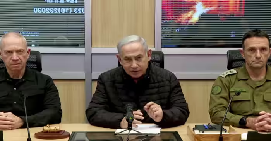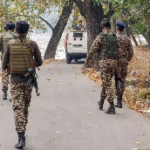Israel carried out an attack on Iran early on Saturday targeting missile and air defence systems. The operation, done in coordination with the United States, was less aggressive than many had predicted. This more cautious approach could aid diplomatic efforts, such as negotiating the release of hostages and reducing the risk of the conflict expanding into Lebanon and Gaza. Israel had waited to act until after US Secretary of State Antony Blinken finished four days of talks with Israeli and Arab allies and returned to Washington.
In a series of night-time missions, likely over enemy areas—such as Syria and Iraq—dozens of Israeli fighter jets flew thousands of kilometres. They refuelled mid-flight and targeted military locations in three provinces, responding to Iran’s ballistic missile attack on Israel on October 1. Iranian state media reported strikes in the Ilam and Khuzestan provinces, as well as around Tehran.
However, Israel avoided hitting oil, nuclear and civilian infrastructure, following a request from US President Joe Biden’s Administration. The US is leading efforts to resolve the crisiss that began after a brutal attack on Israel by Hamas, an Iranian-backed group in Gaza, a year ago. Defence Minister Yoav Gallant stated that he stayed in close contact with US Defense Secretary Lloyd Austin during the operation, according to Bloomberg.
Israel’s limited action on Saturday led Iran to downplay the attack as ‘ineffective’. This may lead to either a mild response from Iran, or no response at all. Iran’s First Vice-President, Mohammad Reza Aref, posted on his X account, saying, “Iran’s strength has embarrassed the country’s enemies.” Meanwhile, state TV showed children heading to school and people exercising. The official Tasnim news agency only mentioned that Iran “reserves the right to respond”.
Israeli officials described the attack differently, highlighting it as proof of their deep understanding of Iran’s military bases, their ability to strike anywhere in the country and to send a clear message to the government in Tehran. Amos Yadlin, a former head of Israel’s military intelligence, said on Channel 12, even before the attack was over, that “the next move is up to Iran”. He explained that the aim was to show what Israel is capable of doing.
The operation was called ‘Days of Penitence’ (which means showing regret for wrongdoing), referring to a recently concluded period in the Jewish calendar. The name suggests it was intended to inspire reflection, regret and, possibly, new decisions, both from allies and enemies.
US allies in the region, such as Saudi Arabia, publicly condemned the Israeli attack, calling it a violation of Iran’s sovereignty. However, Israeli officials believed that Saudi Arabia was privately okay with the limited nature of Israel’s actions. Political leaders in Israel, both to the right and left of Netanyahu, criticized the attack, saying it was a missed chance to make a stronger strategic impact. They argued that it showed a lack of clear decision-making.
However, some pointed out that Netanyahu’s strong actions against Hezbollah in Lebanon recently had significantly helped restore Israel’s ‘strength’, which had been weakened by the October 7, 2023, Hamas attack that killed 1,200 people and saw 250 others kidnapped.
Hezbollah has been shelling Israel for a year to show support for the Palestinians in Gaza, who have been under Israeli attack. Both Hezbollah and Hamas, seen as terrorist groups by the US and other countries, say their goal is to destroy Israel. Israel has not only sent troops into southern Lebanon, but also targeted Hezbollah’s top leaders, killing and injuring many. They have also destroyed a number of missile-launchers and storage sites.
It has been expected for a long time that, if Israel attacked Iran, Hezbollah would respond by launching thousands of long-range missiles at cities in Israel for weeks, leading to significant damage and loss of lives. But, so far, Hezbollah has only managed to fire a few of these long-range missiles. With Hamas also significantly weakened, the threat from them has greatly decreased.
According to Hamas officials, Israel’s war on Hamas has killed around 42,000 people in Gaza, although they do not separate fighters from civilians. Much of Gaza has been destroyed in the conflict, which has faced widespread global criticism.
The US and other countries are working to strengthen Lebanon’s army and political system and push Hezbollah away from Israel’s border. They are also trying to secure the release of around 100 Israeli hostages still held by Hamas. Additionally, they hope to create plans for rebuilding and governing Gaza without involving Hamas or the Israeli military.
Israel’s limited action on Saturday might speed up these efforts, including involving the United Arab Emirates and other Gulf countries in rebuilding Gaza, if a ceasefire can be agreed upon. Not much is expected to happen until the US presidential election on November 5. Israel’s next moves will, possibly, depend upon whether Donald Trump or Kamala Harris wins.



